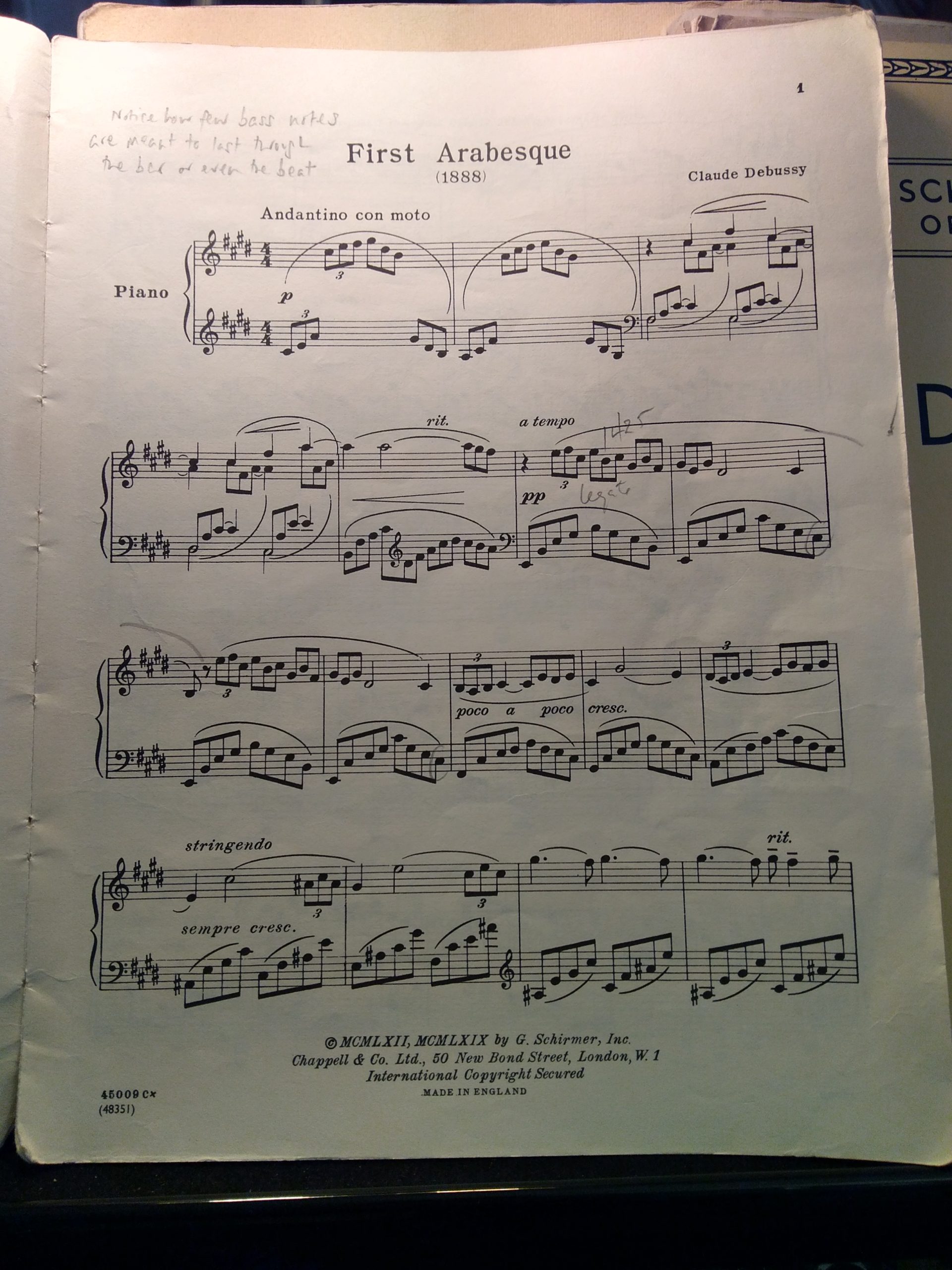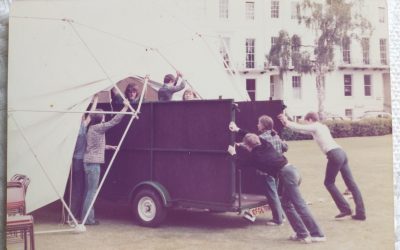 Hardly an unknown piece, of course, but there are aspects of it we don’t often consider. For example, the pedalling! Debussy doesn’t mark any. What are we to make of that?
Hardly an unknown piece, of course, but there are aspects of it we don’t often consider. For example, the pedalling! Debussy doesn’t mark any. What are we to make of that?
Some composers carefully mark where they want the pedal to be used. Some don’t mark pedal at all. Many rely on the pianist to use their common sense and apply pedal where the music seems to need it. (I’m talking here about the right-hand pedal, the sustaining pedal, which lifts the hammers from the strings and allows them to resonate.)
‘Where the music seems to need it’ is a guideline which varies from piano to piano, and from hall to hall. Pedalling you’ve worked out in a small practice room may suddenly seem too much or too little in a large acoustic, or on a piano with a bigger tone. You have to remain open to change.
Musical scores are sometimes compared with recipes in a cookery book: an indication of how to arrive at the real thing, but not the real thing itself. I’ve always thought that a useful analogy, because we’ve all tried cooking from a recipe. We know that what we do and the way we do it is crucial. If we add or leave out ingredients, or change how long the dish is in the oven, the recipe will come out differently – and maybe not at all as the cookery writer hoped.
By analogy, it makes no sense for a composer to notate everything else but leave out their thoughts on pedalling. It’s as if a cookery writer were to give a cake recipe but leave out the sugar, arguing that ‘everyone knows a cake needs sugar, so we can safely leave them to put in a sensible amount.’
So when we look at a charming, tuneful piece like Debussy’s first Arabesque, how much sugar should we add? Or should we conclude that because he says nothing about the pedal, he wanted a light, dry sound?
It’s interesting to play the Arabesque with no pedal at all. Firstly, you notice that it sounds much more like a piece for clavichord or harpsichord – perhaps a useful thing to notice, as Debussy was very fond of French Baroque music.
Secondly, you notice that although most of the notes are of short duration, Debussy does occasionally indicate a chain of longer notes, for example in the left hand in bars 3 and 4 (see photo). If you’re playing without pedal, these longer bass notes have a quite different effect – a change of texture impossible to achieve if you’ve been pedalling from the start. I admit that it’s a struggle not to use the pedal in bar 5, the end of the phrase, where there is no sustained bass note, yet a crescendo and a slowing down…. it’s hard to achieve that ‘perfumed haze’ without the cushioning effect of the pedal.
In the whole Arabesque there are not many places where a chord or bass note is to be sustained for longer than a beat or two. Those places (eg the end of the middle section, just before the return of the main tempo) are to be cherished. On the last page, there are some long notes in both hands as the piece winds to a close – a change of texture you may miss if your pedalling is on automatic pilot.
Getting to know the piece ‘without make-up’ will draw your attention to the places where a note, a chord or line emerges from the featherlight accompaniment. When you next play the piece with pedal, you’ll probably find you have acquired a new sensitivity to its textures.




A favourite piece of mine in teenage years. I took it to my first piano lesson at RCM and was told I wasn’t doing the ‘right’ pedalling…I tried pointing out that it seemed to be up to the player to feel what was right for the moment but this was not received enthusiastically! Not a good start to a student / teacher relationship!
Susan, this post is gorgeous! The use of the sustaining pedal in Debussy’s first Arabesque is EXACTLY what I needed to read about during these strange days… I suppose that the performer should add as much sugar as she or he happens to like… Beautifully and concisely written, you should think about writing a book! Oh, you already did 😀
Brava… just what I needed after suffering from a day of panic attacks… I would really like a post about the second Arabesque too; the unsung younger brother who I also adore!
James, thanks so much for both your kind comments. I hadn’t thought of writing about the second Arabesque, but why not? If I have something worth saying, I’ll try to do it. Sending you reciprocal good wishes from the UK.